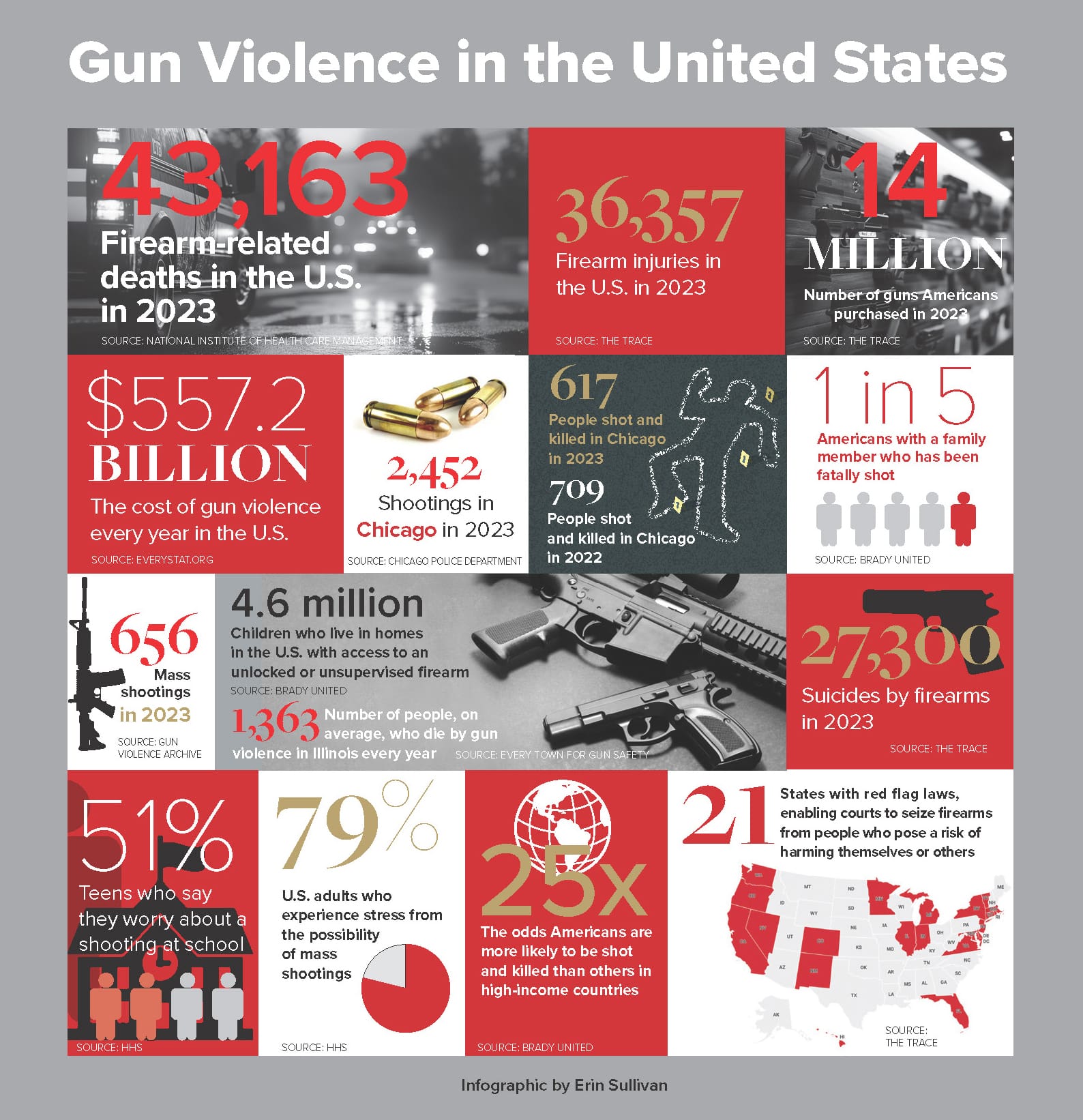For the first time in history, the United States Surgeon General in June 2024 declared gun violence a public health emergency.
“Firearm violence is a public health crisis. Our failure to address it is a moral crisis,” Surgeon General Vivek Murthy, MD, said in a public address.
Murthy introduced a 39-page advisory, laying out an approach to address firearm violence. Tactics include:
- Community violence prevention programs and firearm risk-reduction strategies
- Greater access to mental health care for those exposed to or at risk for firearm violence
- Research funding to inform prevention strategies
In 2021, 43,163 people died from gun-related injuries in the U.S. And firearms were involved in the deaths of more children than any other type of injury or illness, making guns the no. 1 killer of children (surpassing deaths due to motor vehicles).
Karen Sheehan, MD, a pediatrician at Ann & Robert H. Lurie Children’s Hospital of Chicago, agrees with the Surgeon General that gun violence ranks as the no. 1 public health issue in the U.S.
“I’ve been doing this for 30 years.
I was certain things would change after Sandy Hook,” Sheehan says, referring to the 2012 mass shooting at Sandy Hook Elementary School in Connecticut. The shooter there killed 20 children between ages 6 and 7, as well as six adult staff members.
To study this peculiar American crisis requires research. But the Dickey Amendment, originally a rider to the 1997 omnibus spending bill, effectively banned all federally funded research on gun violence and advocacy for gun control.
New language was added to the amendment in 2018, the year that 17 people, including 14 students, died during the shooting at Marjory Stoneman Douglas High School in Parkland, Florida. The new bill allows the Centers for Disease Control and Prevention to conduct research, but it still cannot use federal funds to advocate for gun control.
In the 2020 federal budget, $25 million was made available for gun violence research. Sheehan says that’s not adequate for the leading cause of death for young people. For comparison, in 2023, cardiovascular funding for the National Institutes of Health was $2.88 billion dollars.
“Three years of research is just a beginning,” Sheehan says, “but hopefully we’ll start gaining good knowledge on what interventions will be effective.”
America’s most vulnerable deserve no less.











